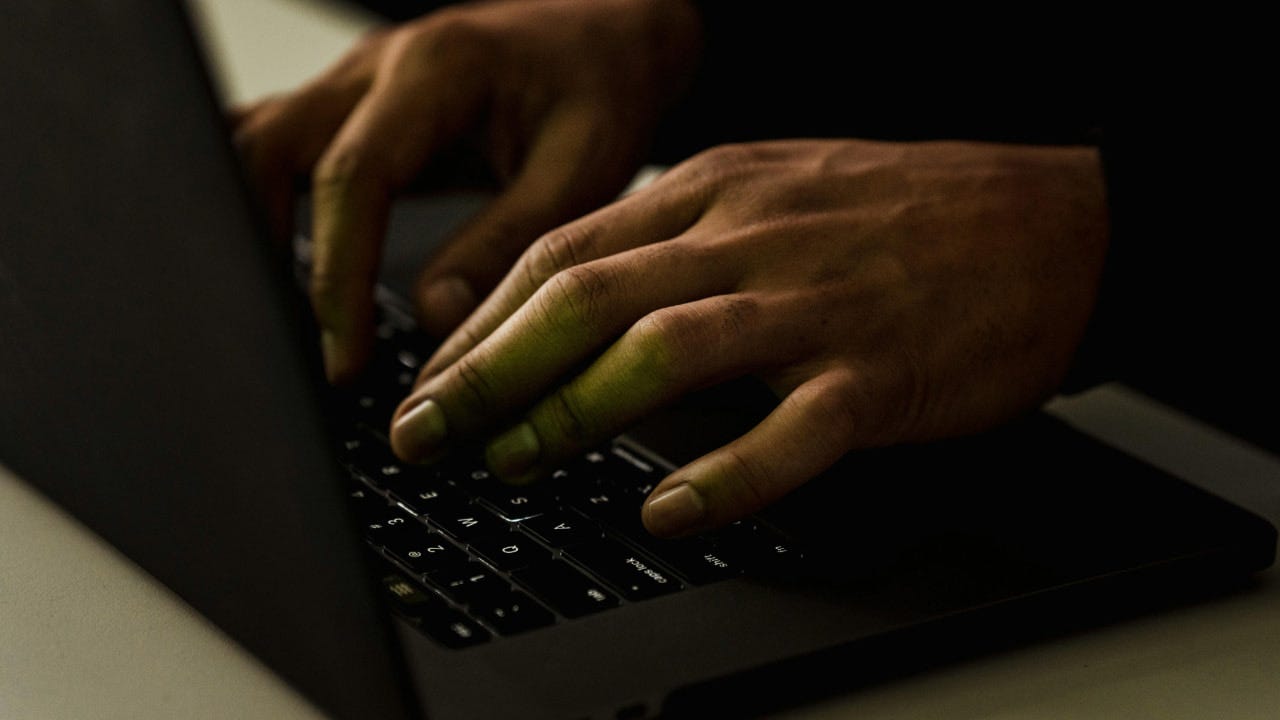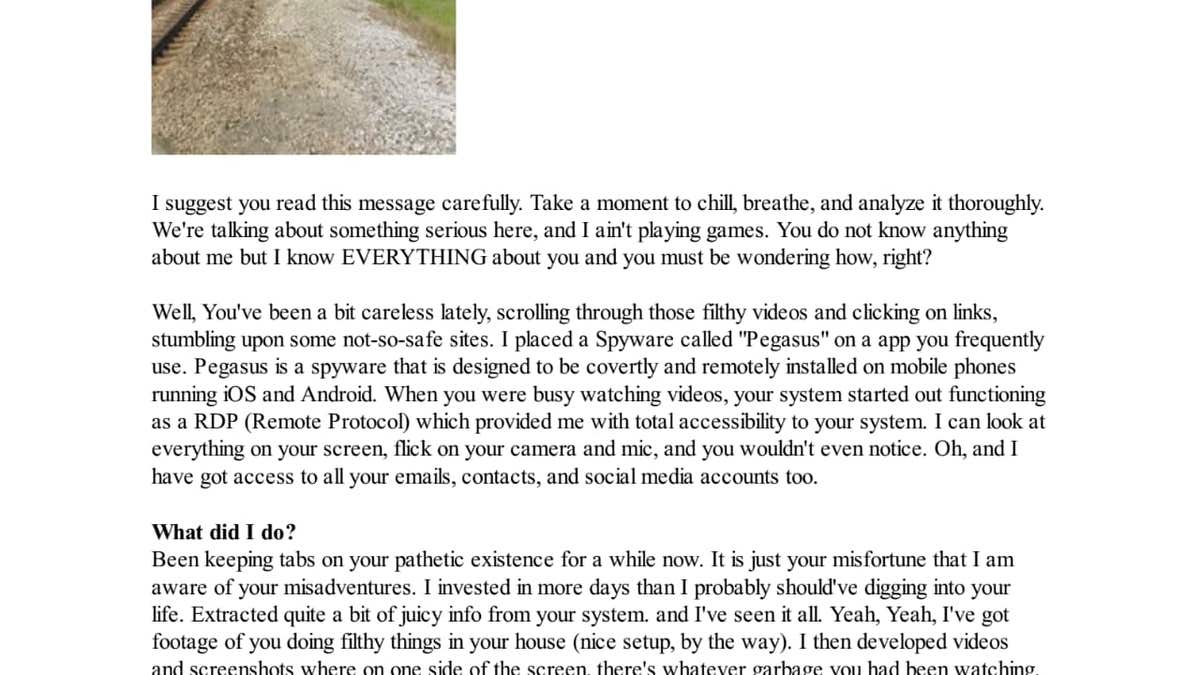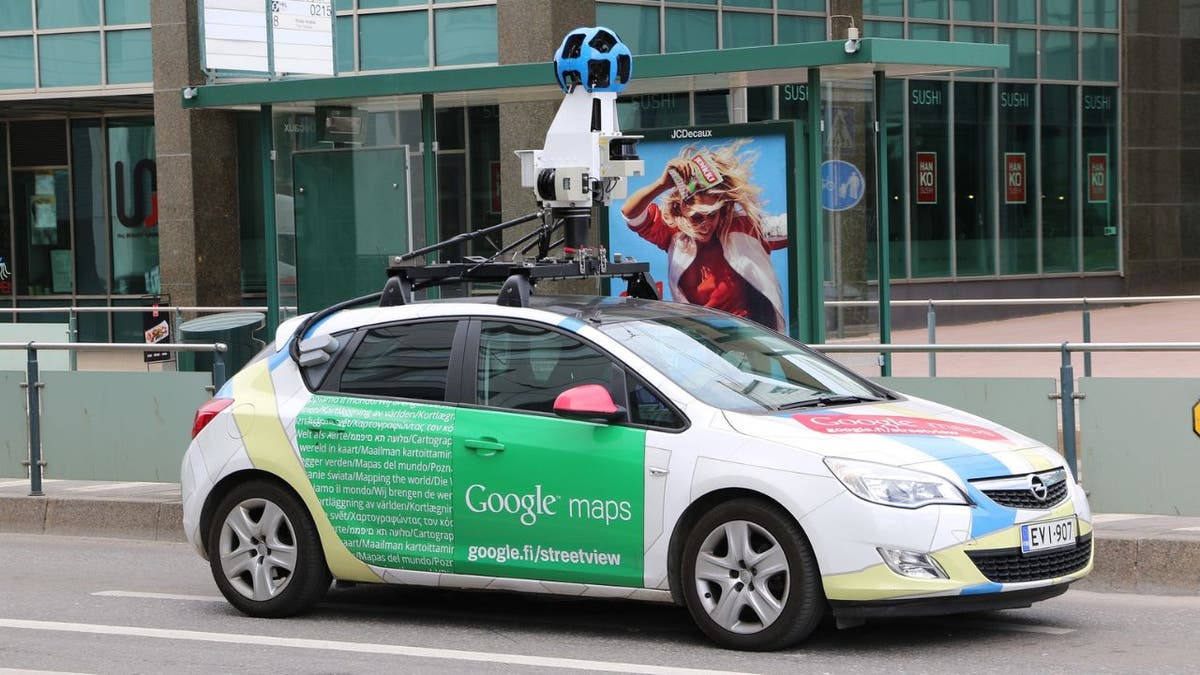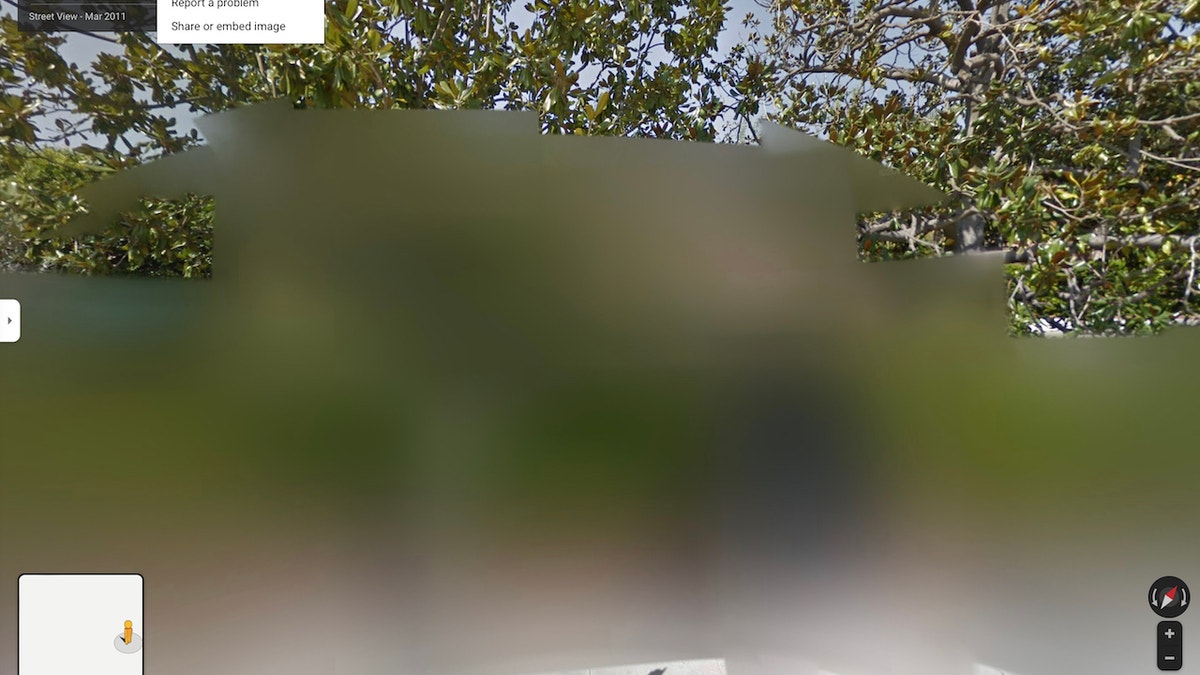Tesla finally did the damn thing. The company launched its hotly anticipated robotaxi service in Austin, Texas, on Sunday, June 22nd — and we’re now starting to see some of the first reactions roll in.
Technology
Sextortion scams evolve with Google Maps images to intimidate victims

Scammers often rely on fear to steal your hard-earned money. No matter the scam, whether it’s a Microsoft call scam or government impersonation, they all attempt to scare you by claiming that something is seriously wrong with you or your devices and that only they can fix it. The latest sextortion scams targeting many in the U.S. are no exception.
These bad actors contact you via email, claiming to have compromising photos or videos of you in private situations, and demand money to delete them. What’s new is that these scammers now include images of your home to make their threats seem more convincing.
I’ve received emails from many people sharing how these scammers targeted them. Below is a breakdown of the evolved sextortion scam and tips on how to stay protected.
GET SECURITY ALERTS, EXPERT TIPS – SIGN UP FOR KURT’S NEWSLETTER – THE CYBERGUY REPORT HERE
Illustration of a scammer at work (Kurt “CyberGuy” Knutsson)
How the scam works
It starts when you get an email from a scammer claiming they recorded you while you were watching adult content. They use your name and include a photo of your house or a nearby street to make it seem real.
The scammer claims to have installed a spyware called “Pegasus” on your phone and has access to everything you watch. Pegasus is a spyware developed by NSO Group, a company that sells it only to government agencies and law enforcement.
It’s super expensive and highly unlikely that a random scammer would have access to it. Even if they did, stalking people watching adult content wouldn’t be worth their time. Plus, if they have installed the spyware on your phone, they won’t need to ask you to send money.
Once the scammer has you scared, they offer to delete the so-called footage and pretend you never existed if you pay them. They usually include a QR code for a cryptocurrency wallet and ask for Bitcoin as payment. One email I saw from a victim mentioned a ransom of about $2,000.
I’ve attached a portion of the email the victim got below. I’ve blurred out any personal info to protect their identity, but you can still check out the text.

Actual sextortion scam email (Kurt “CyberGuy” Knutsson)
HERE’S WHAT RUTHLESS HACKERS STOLE FROM 110 MILLION AT&T CUSTOMERS
How do scammers know your location?
The image of your home might make the scam look real, but it’s probably just a trick. One possible reason they have that info is a data breach. Your address might have been leaked in a breach and ended up on the dark web. Scammers could have gotten hold of it and used Google Maps to find a picture of your house. Another reason could be that you put up a listing for something online, like a rental or sale ad. If you’ve shared your address publicly in an online listing, scammers might have found it that way.

Google Maps vehicle that captures images (Kurt “CyberGuy” Knutsson)
MASSIVE FREE VPN DATA BREACH EXPOSES 360 MILLION RECORDS
Protect your privacy: Blur your house on Google Maps
Google Maps is how they get access to images of your house. But you can blur your house on the platform and prevent scammers from fearmongering. You’ll need to do this from a computer since the blurring feature isn’t available in the Google Maps app on iOS or Android. Follow these steps to learn how:
- Go to maps.google.com and type your home address into the search bar at the top-right.
- Click on the photo of your house that shows up.
- You’ll see a Street View image of your place. Click Report a Problem in the bottom-right corner.
- Adjust the view so that your home and anything else you want to blur is inside the red and black box using your mouse.
- Select the option to blur your home from the choices given.
- Hit Submit, and Google will review your request and blur your house if they think it’s necessary.

Google Map-blurred home (Kurt “CyberGuy” Knutsson)
4 additional steps to stay protected from sextortion scams
Here are four additional steps you can take to stay protected from sextortion scams:
1) Be cautious with personal information: Avoid sharing personal information like your address, phone number or other sensitive details online. Be mindful of what you post on social media and other platforms.
2) Watch out for red flags: Scammers are mostly bluffing. For instance, the Pegasus software they claim to be using is a lie. Stay informed about common scams and how they work. Knowing what to look out for can help you recognize and avoid potential threats.
3) Change passwords: If the email includes a password, make sure you are not using it anymore, and if you are, change it as soon as possible. ON ANOTHER DEVICE (i.e., your laptop or desktop), you should change your passwords for all your important accounts, such as email, banking, social media, etc.
You should do this on another device to ensure that if the scammer actually has access to your device, they aren’t recording you setting up your new password. And you should also use strong and unique passwords that are hard to guess or crack. You can also use a password manager to generate and store your passwords securely. Changing passwords should be a part of your general cybersecurity hygiene, even if you’re not affected by a data breach.
4) Use personal data removal services: Consider investing in personal data removal services that specialize in continuously monitoring and removing your personal information from various online databases and websites.
I mentioned above that scammers most likely got access to your address through a data breach. A data removal service can help you remove all this personal information from the internet. Check out my top picks for data removal services here.
WORLD’S LARGEST STOLEN PASSWORD DATABASE UPLOADED TO CRIMINAL FORUM
Kurt’s key takeaway
Scammers use fear and deception to trick you into giving up your hard-earned money. By understanding how these sextortion scams work and knowing what to look out for, you can better protect yourself from falling victim. Remember, most of these scammers are bluffing and rely on exploiting your fears. Keep your personal information secure, be cautious about what you share online and always verify the legitimacy of any threatening messages you receive. If you encounter a scam, report it to the appropriate authorities and take steps to secure your accounts and devices.
Have you ever encountered a similar scam or any other type of scam? How did you handle it? Let us know by writing us at Cyberguy.com/Contact.
For more of my tech tips and security alerts, subscribe to my free CyberGuy Report Newsletter by heading to Cyberguy.com/Newsletter.
Ask Kurt a question or let us know what stories you’d like us to cover.
Follow Kurt on his social channels:
Answers to the most asked CyberGuy questions:
New from Kurt:
Copyright 2024 CyberGuy.com. All rights reserved.

Technology
Tesla’s robotaxi is live: here are some of the first reactions

But first, we have to get a few important caveats out of the way. Tellingly, the service is not open to the general public, nor is it completely “unsupervised,” as Elon Musk once promised. The vehicles will include Tesla-employed “safety monitors” in the front passenger seat who can react to a dangerous situation by hitting a kill switch. Other autonomous vehicle operators would place safety monitors in the driver or passenger seats, but typically only during the testing phase. Tesla is unique in its use of safety monitors during commercial service.
The rides are limited to a geofenced area of the city that has been thoroughly mapped by the company. And in some cases, Tesla is using chase cars and remote drivers as additional backup. (Some vehicles have been spotted without chase vehicles.)
The service is invite only at launch, according to Tesla’s website. A number of pro-Tesla influencers have received invites, which should raise questions about how unbiased these first critical reactions will be. Tesla hasn’t said when the service will be available to the general public.
The limited trial includes 10-20 Model Y vehicles with “Robotaxi” branding on the side. The fully autonomous Cybercab that was first revealed last year won’t be available until 2026 at the earliest. The service operates in a small, relatively safe area of Austin from 6AM to 12AM, avoiding bad weather, highways, airports, and complex intersections.
Despite those hours, the robotaxi service seems to have gotten off to a slow start. Several invitees had yet to receive the robotaxi app by 1PM ET on Sunday. Sawyer Merritt, who posts pro-Tesla content on X, said he saw 30 Waymo vehicles go by while waiting for Tesla’s robotaxi service to start. Musk posted at 1:12PM that the service would be available later that afternoon, adding that initial customers would pay a “flat fee” of $4.20 for rides — a weed joke with which Musk has a troubled history.
While riders waited, the company published a new robotaxi page to its website detailing a lot of the rules and guidelines of the service. Visitors are invited to sign up for updates about when Tesla’s robotaxi service may come to their area. (Musk has said there could be up to a thousand robotaxis on the road “in a few months.”)
After finally being granted access to the app, Merritt posted an image of the service area map, which appeared to cover a small area bordered by the Colorado River to the north, Highway 183 to the east, Highways 290 and 71 to the south, and Zilker Part to the west.
And then the rides began — and they appeared to be mostly uneventful. Several invitees livestreamed themselves summoning their first cars, interacting with the UI, and then arriving at their destination. Several videos lasted hours, as the invitees would conclude a trip and then hail another car immediately after. One tester, Bearded Tesla Guy, described the app’s interface as “basically Uber.” Many had some difficulty finding the pickup location of their waiting Tesla robotaxi.
“This is like Pokemon hunting,” one person on Herbert Ong’s livestream said, “but its robotaxi hunting.”
Once inside, the Tesla-employed safety monitor would ask the riders to show their robotaxi apps to prove their identities. Otherwise the safety monitors kept silent throughout the ride, despite riders trying to get them to talk. I’m assuming that Tesla will need to come up with some other way to identify their riders if they plan on removing the safety monitors from the passenger seat. Waymo, for example, asks customers to unlock their vehicle through the ridehail app.
The rear screen instructs the riders to fasten their seatbelts, and after pressing an animated “start ride” button, the vehicle gets underway. Riders can also start the ride from a similar button in the app. Since riders are registering for the robotaxi app using their preexisting Tesla profiles, they’re greeted with their preferred music apps on the rear screen with all their playlists and saved tracks.
The front display shows a visualization similar to consumer vehicles using Tesla’s Full Self-Driving feature — even though Musk had said the robotaxis are running on a special version of FSD that’s not available to the average Tesla owner. There are “pull over,” “stop in lane,” or “support” buttons on the center display. Another tester, Chuck Cook, said the visualization lacked some of the controls that a normal Tesla might have.
Pressing the support button places the rider in a queue as they wait for the remote operator to connect. On Cook’s livestream, it took approximately two minutes before an operator finally connected. “We appreciate you calling in,” the operator said (though the cellular connection was poor). “We’re here for any issues to support your ride.”
Throughout the various trips, the robotaxis encountered a bevy of normal situations, like U-turns, speed bumps, pedestrians, construction, and more. The vehicles maintained speeds of about 40 mph or slower. Common words to describe the ride was “smooth,” “great,” and “normal.” One tester said on X that they got the robotaxi to “mess up” in a way that required the remote operator to help out — though they declined to describe it as a disengagement.
Ashok Elluswamy, the head of the company’s self-driving team, posted a photo of several dozen people in a room with 10 large monitors on the wall showing live camera feeds from several vehicles. “Robotaxi launch party,” Elluswamy wrote.
Where Tesla goes from here is the real challenge. Musk has said he also wants to launch a robotaxi service in California, where the regulatory process is a lot more complex than Texas. And even though he has said he wants to take things slow, he also claims that Tesla will have over a thousand driverless vehicles on the road “within a few months.”
Meanwhile, Waymo is operating more than 1,500 driverless vehicles in San Francisco, Los Angeles, Phoenix, and Austin — with plans to expand to Atlanta, Miami, and Washington, DC in the near future. The Alphabet-owned company has said it will grow its fleet to 2,000 vehicles by next year.
Technology
Suicide bomber strikes Syrian church near Damascus during mass

NEWYou can now listen to Fox News articles!
A suicide bomber in Syria on Sunday detonated himself inside a church filled with people, state television and a war monitor said.
The explosion in Dweil’a in the outskirts of Damascus took place as people were praying inside the Mar Elias Church. Britain-based war monitor the Syrian Observatory for Human Rights says there were 30 people wounded and killed, but the exact numbers are unclear. Some local media reported that children were among the casualties.
THEY WANT AMERICANS DEAD, TOO — THE THREAT FROM IRAN AND ITS PROXIES
A suicide bomber exploded at the Mar Elias Church on the outskirts of Damascus, Syria, on June 22, 2025. (BAKR ALKASEM/AFP via Getty Images)
The attack was the first of its kind in Syria in years, and comes as Damascus under its de facto Islamist rule is trying to win the support of minorities. As President Ahmad al-Sharaa struggles to exert authority across the country, there have been concerns about the presence of sleeper cells of extremist groups in the war-torn country.
WE CAN’T IGNORE THE DANGER FROM THOSE WHO WANT TO ‘GLOBALIZE THE INTIFADA.’ WE NEED TO TAKE ACTION

A suicide bomber attacks a church on the outskirts of Damascus, Syria, on June 22, 2025. (BAKR ALKASEM/AFP via Getty Images)
Security forces and first-responders rushed to the church. An eyewitness said in a video widely circulated online that the attacker came in and started to shoot at the people there before detonating an explosive vest he was wearing.
Technology
Weird-shaped notebooks make me want to write again

Andru Marino is an audio and video producer at The Verge. “I make videos on our YouTube / TikTok / Instagram channels, and have produced our podcasts like Vergecast, Decoder, and Why’d You Push That Button?” He also keeps a lot of notes, and his latest favorite places to keep them are the Triangle and Sidekick notebooks. I asked him about them.
Where did you first hear about these notebooks?
I don’t really remember when I first saw the Triangle Notebook. It was probably an Instagram ad. I had kept a link to the notebook’s website in a browser tab on my phone for a few months and kept thinking about it.
When did you buy it, and what went into the decision?
I bought it in April, and what really attracted me was how weird it was. Why does the notebook need to be a triangle? Oh, it opens up into a square! Wow, I love that! The main reason I use paper is to doodle, and I thought this shape would inspire me to doodle differently.
And then I saw this company also made another notebook called the Sidekick that basically looks like an L when opened, so it is angled alongside your computer keyboard. That was so wacky to me. So I bought that one too.
What do you like about them?
This seems more like an art experiment than anything. I love objects that make you rethink how they are used. I typically have Post-it notes or a spiral notebook on my desk so I can write something down or doodle during a meeting. The Sidekick doesn’t take up a ton of space on my desk either opened or closed.
The Triangle Notebook is actually great for using on your lap or other unconventional surfaces, as it is pretty sturdy and lays flat on its spine.
Both notebooks also encourage me to use my handwriting more, which was a New Year’s resolution I had.
Is there anything about them that you dislike, or that you think could be improved?
I am not entirely sure if it makes sense to take notes on an L-shaped piece of paper, but that is just what makes the Sidekick different.
The Triangle Notebook could have a few more pages in it. It is nicely bound and sort of expensive ($33), so I would like to get more use out of it. Also it is so long! I don’t know where to store it.
And the pages don’t tear out very easily. I’d love to give someone a note on a weird-shaped piece of paper.
Who would you recommend it to?
I’d recommend the Sidekick to an artist who wants to doodle during meetings — which is why I bought this. But I can also see it working for someone who draws on a tablet and wants to briefly write down some notes about what they are working on.
I don’t know who I would recommend the Triangle Notebook to besides someone who likes weird objects. I’d love to know if someone feels like they do their best work on a triangle-shaped notebook.
You started this by saying you hoped these notebooks would inspire you to doodle differently. Have they?
So far, no. My notes look the same mess as ever, but it has encouraged me to doodle more and write more, so that makes me happy.

$33
Triangle-shaped notebook that opens into a square.


$24
Notebook shaped like an “L” to wrap around your keyboard.
-

 Arizona4 days ago
Arizona4 days agoSuspect in Arizona Rangers' death killed by Missouri troopers
-

 News1 week ago
News1 week agoAt Least 4 Dead and 4 Missing in West Virginia Flash Flooding
-

 Movie Reviews1 week ago
Movie Reviews1 week agoTitan: The OceanGate Disaster Movie Review: A sobering deep dive into ambition, negligence, and tragedy
-

 News1 week ago
News1 week ago‘No Kings’ demonstrators to gather across Greater Cincinnati in opposition to Trump
-

 News1 week ago
News1 week agoOakland County sheriff urging vigilance after shootings of 2 Minnesota lawmakers
-

 Culture1 week ago
Culture1 week agoBook Review: “The Möbius Book, by Catherine Lacey
-

 Health1 week ago
Health1 week agoHairstylists and medical expert confirm temporary hair loss affecting Ozempic users
-

 Technology1 week ago
Technology1 week agoInside Mark Zuckerberg’s AI hiring spree














